Running trips—from Utah’s desert to Patagonia’s peaks—offer the most thrilling (and humbling) adventures this writer’s ever experienced.
Trail runners in mid-stride head towards the summit. (Photo: Getty)
Updated August 1, 2025 07:19AM
Dusk is crowding the narrow trail that my brother and I are navigating, and by the time we hit a dirt road that will eventually lead us to our beds for the night, it is pitch black. I’m running down a mild hill just behind him when he’s suddenly splayed awkwardly on the ground in front of me, a slew of curse words issuing from his mouth.
Before my brother’s fall, we were 30 miiles and six mountain passes into our second day on the Walker’s Haute Route—a 124-mile trail that stretches from Chamonix to Zermatt, and we’ve gained and lost almost 10,000 feet of elevation since we began running the trail. The route is stunning, packed with glaciers, cerulean lakes, and towering peaks. Despite its beauty, the route is technically demanding, and as I look at my brother picking himself off the gravel, I wonder: Why is this how I chose to spend my vacation?
A few months after this trip, I’m running along a stretch of creamy singletrack in southern Utah. As I round a bend on the Fairyland Loop in Bryce Canyon National Park, I’m so taken aback by the beauty the crimson-colored hoodoos unfurling before me that that I catch my toe on a lone rock embedded in the trail and go down hard, landing squarely on my elbow and thigh.
As scarlet blood streams from the gash in my elbow and bruises begin to bloom spectacularly across my leg, my ego finds a small consolation: the blissful solitude of this trail. Far from the crowded lookouts that dominate the park, there’s fortunately no one here to witness my fall.
Over the past few years, I’ve taken many trips that revolved entirely around trail running. I’ve capered through the Rockies near my home in Calgary, Alberta (a gateway to Banff National Park’s world-class trails), and breathlessly struggled to tackle volcano routes in Ecuador. Ask me how I feel about these running vacations (injuries, frustrations, and all) and I will tell you that they were some of the most thrilling—and humbling—trips I’ve ever taken.
Running Vacations Are More Than Racking Up Mileage
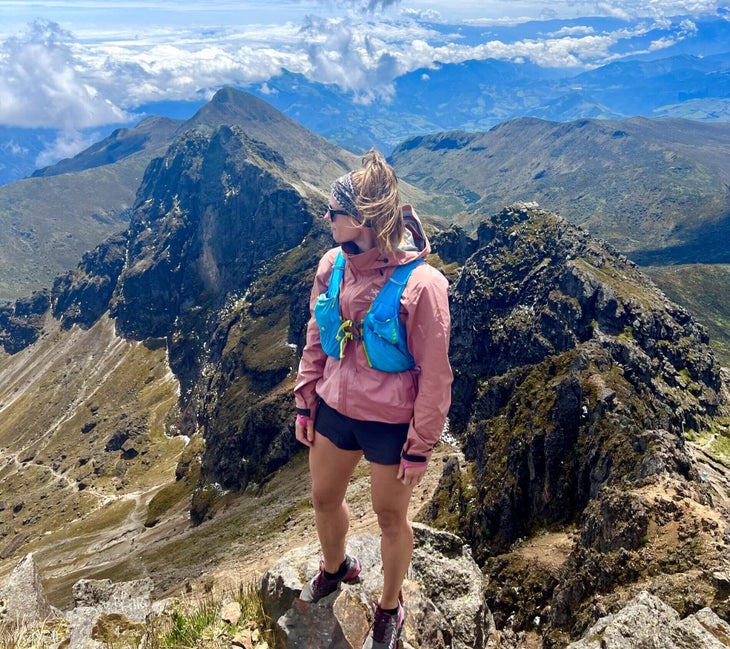
Running vacations are a rapidly growing travel trend, reflected in the sharp rise of companies now offering guided running tours worldwide. According to one running group’s 2024 activity report, “the run club is the new night club,” with global run club participation rising by 59 percent last year. Accor’s 2025 Travel Trend Report also highlights this fitness movement in the travel sphere, noting a 50 percent increase in searches for “workout holidays” over the past year.
Elinor Fish, however, has been ahead of the curve for years. A lifelong runner and former editor at Trail Runner magazine, she founded Run Wild Retreats, which offers women-only running and wellness tours, in 2010, long before the travel trend took off. The first trip Fish (the former CEO of the company) organized began as a small Colorado getaway that grew into a global movement built around something deeper than just mileage.
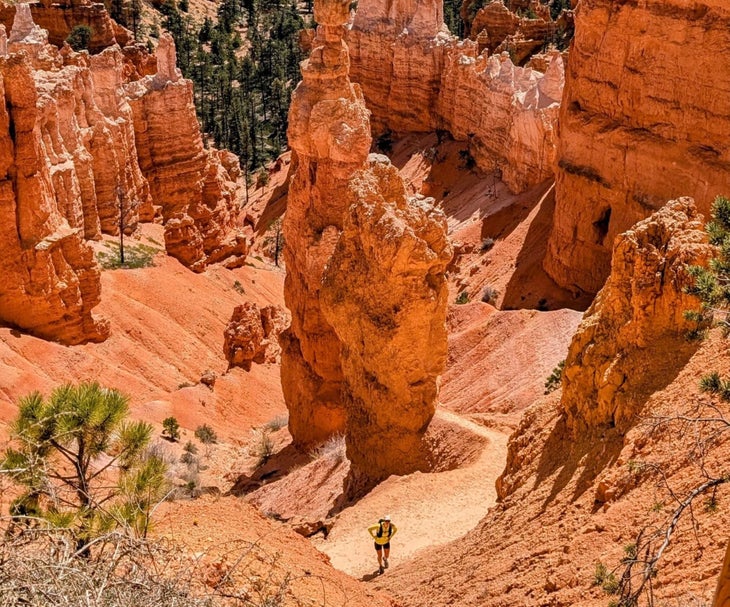
After joining a guided running trip with Andes Adventures in Patagonia in 2007—with one of the few companies offering guided running vacations at the time—Fish realized what makes these experiences powerful: shared trails, shared values, and a sense of purpose beyond the workout, especially with a local guide.
“When you’re traveling in a foreign country and you’re spending every day running on a trail together, it really helps build connections quickly,” she says. “All of a sudden, the running becomes a vehicle for having enriching cultural experiences that are completely outside the norm.”
Fish describes a running vacation as a transformational experience: “It can actually change you. It helps give the whole experience more meaning.” Her perspective reflects a broader movement in travel today, where, as Accor’s report also notes, travelers increasingly are choosing travel for fitness, versus something to fit in before a day of exploring.
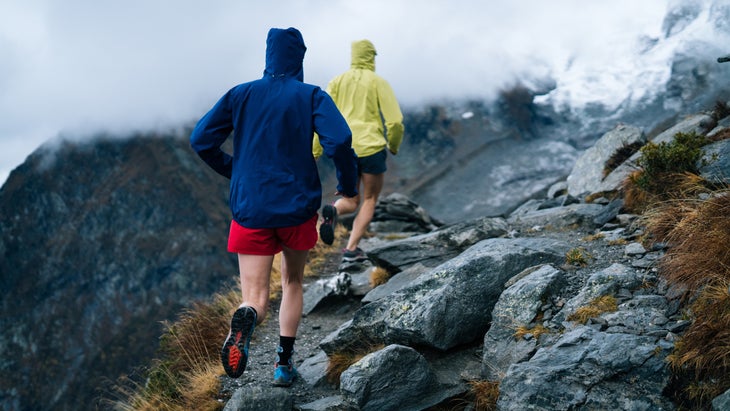
Liz Gill, a running coach and owner of Runcation Travel, saw firsthand how the pandemic accelerated the running vacation trend with more people turning to the trails and roads as a way to stay active and grounded. Like Fish, Gill believes her guided trips are about more than just miles: they’re about community, discovery, and finding balance between challenge and enjoyment.
James Madden, area manager for CMH Heli-Skiing and Summer Adventures at the CMH Bugaboo Lodge and an ACMG and IFMGA-certified mountain guide, agrees that people are increasingly seeking active adventures with like-minded individuals in a supportive setting. While many guests arrive at their Alpine Trail Running tour feeling nervous, Madden says there’s a common misconception about what a running vacation actually involves.
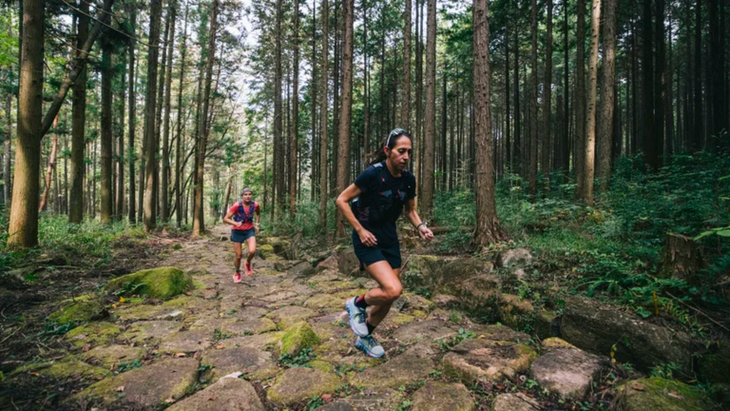
“The misnomer is that we go out and we run as hard as we can for hours. [In reality,] we go out, we run, we jog, we swim, we laugh, we take photos,” he says. “It’s really just about being in the mountains all day.”
With point-to-point helicopter support, on-the-ground coaching, and two guides per group, anyone with a basic level of running fitness can take part in CMH’s trips. But of course, signing up is one thing; prepping your body for long days on the trail is another.
How to Prepare for a Running Vacation
As running vacations continue to grow in popularity and transform how people experience travel, knowing how to prepare your body and mind for the unique demands of these adventures becomes essential. Here’s how to set yourself up for success on your next run-cation.
1. Know Your Fitness Limits
If this is your first running vacation, your first time running trails, or your first time running for multiple days in a row, take that into account when booking a tour or mapping out a self-supported adventure. Despite being an experienced trail runner, I overestimated my limits on Switzerland’s Walker’s Haute Route, attempting it in four days instead of the five I actually needed. By day three, exhaustion forced me to skip a scenic section and rely on the gondola, bus, and train to reach my bed.
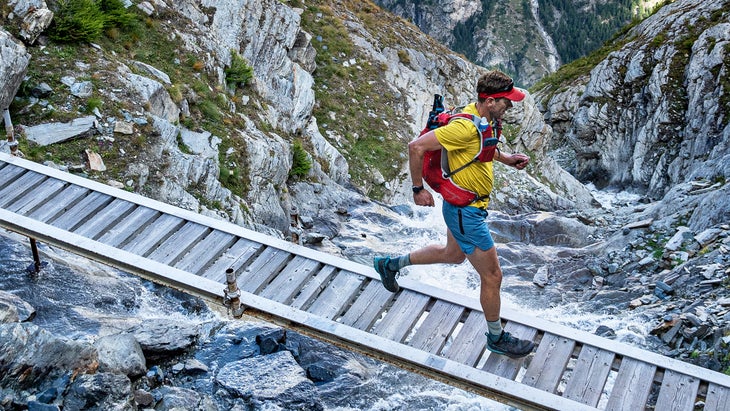
2. Book a Guided Tour
Even if you are fortunate enough to have a running community or a group of friends who all enjoy running, a guided tour is the best option when planning a run-cation. Not only will the trip feel more like a vacation when you don’t have to plan any of the logistics, but you will also have guided support and coaching to help you understand your limits on a trip of this nature.
3. Have a Training Plan/Post-Recovery Plan in Place
Madden says that to join a CMH running trip, participants should be able to easily run six miles or more at least three days a week. Runcation Travel provides training plans for each trip, and Gill also recommends getting out on a trail if you mainly run on the road, or incorporating hill training on the road, or incline training on a Stairmaster or treadmill if you do not have access to trails. While strength workouts are optional, training exercises like single-leg glute bridges, deadlifts, or single-leg squats can help someone ease into trail running or adapt to the consecutive demands of a multi-day trip.
Physiotherapist and avid runner Charlie Clarry says that while being physically prepared is key, try to avoid the trap of overtraining. “It’s better to be under-cooked than over-cooked,” he states. “Tapering is a long-practiced element of a training plan to reduce accumulated fatigue during training.”
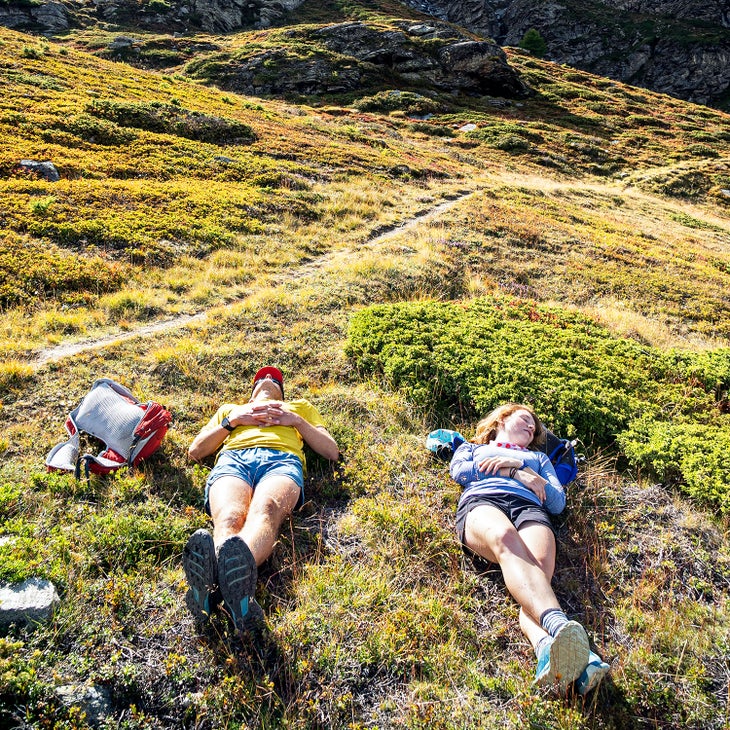
4. Learn to Fuel Properly
Gill emphasizes that one of the key preparations for a running vacation is training your body to eat and drink while on the move, since these runs are far more demanding than a casual morning jog you can do on an empty stomach. Ensuring that you are fueling every hour on your training runs is the best way to tackle this.
5. Remember, It Is Not a Race
Enjoy the experience! While you may be moving faster than on a hiking or walking holiday, that doesn’t mean you need to push yourself to the point of exhaustion. Take in the views, savor the pastry, snap the photos, and relax with a beer. You’re here to have fun, too.
Top Places for Runcations
Now that you know how to prepare for a running vacation, let’s dive into some of the top destinations around the world where you can hit the trails and make the most of your run-cation.
Southwest: Utah and Arizona
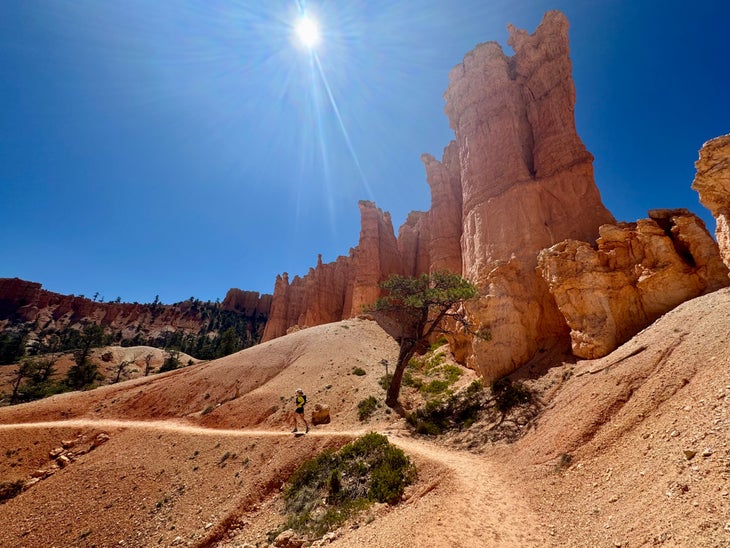
Utah’s national parks are iconic, but the lesser-known Kolob Arch trail in Zion offers a quieter, stunning alternative, featuring one of the world’s largest natural arches. Bryce Canyon’s Fairyland Loop presents a fairy-tale landscape of biscuity hoodoos. Moab, praised as “phenomenal and uniquely beautiful” by Fish, is a hub for trail lovers, with guided retreats like the Moab Mindful Running Retreat from Run Wild Retreats.
Arizona’s Grand Canyon Rim-to-Rim trail tests runners with a punishing 6,000-foot descent into a geological wonder that spans millions of years.
When to Go: Spring and Fall for best weather
Trails to Try: Kolob Arch Trail, Fairyland Loop, Moab’s extensive desert trails and Grand Canyon Rim-to-Rim.
Southeast: Asheville, North Carolina
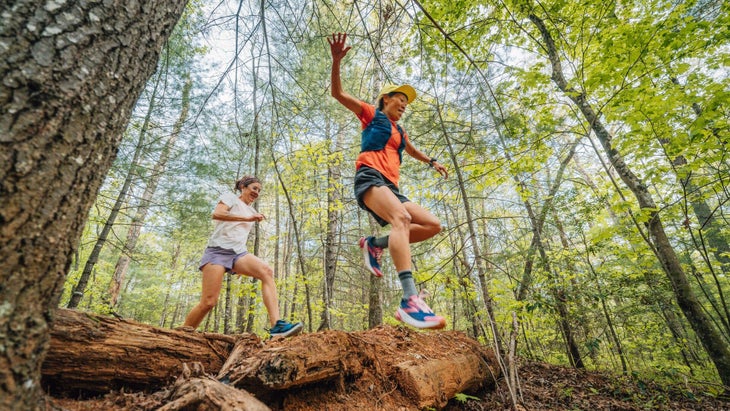
Known for its scenic charm and vibrant running community, Asheville is a prime destination for trail runners. Cruise scenic routes and enjoy a self-guided trail run-cation with accommodations like Wrong Way River Lodge and Cabins that cater to runners seeking a blend of comfort and adventure.
When to Go: Year-round
Trails to Try: The extensive network of forest trails around Asheville offers varied terrain and beautiful vistas for all skill levels.
Mountain West: Montana and Colorado
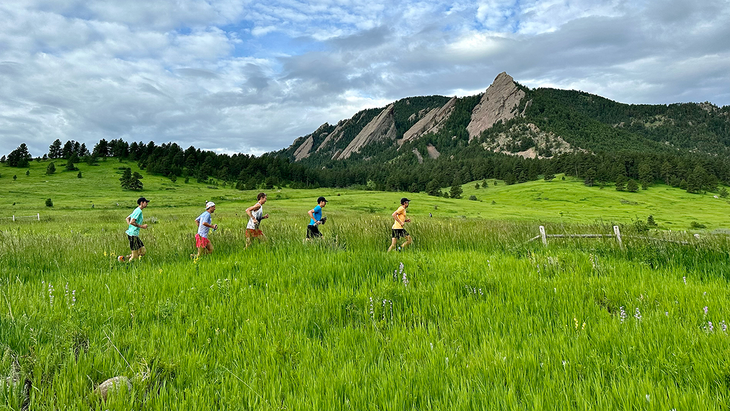
For those craving wild backcountry, Montana’s vast wilderness awaits with guided adventures from Alpine Running Guides. Colorado’s rugged ridgelines and trail systems make it a must-visit. Boulder, often called America’s best running town, offers an extensive trail network that blends urban access with mountain terrain.
When to Go: June to September
Trails to Try: Boulder’s extensive trails are perfect for everything from short runs to long mountain outings. Head to Glacier National Park in Montana to experience the iconic Highline Trail, or take on a more challenging and secluded adventure with the Beaten Path Trail in the Beartooth Mountains. This remote route offers solitude and rugged terrain.
West Coast: California
California’s Sierra Nevada mountain range offers breathtaking trails for every runner. A Yosemite and Mammoth Lakes tour with Runcation Travel provides an unforgettable experience amidst granite peaks and alpine lakes.
When to Go: Late spring to early fall
Trails to Try: Yosemite’s backcountry trails, Mammoth Lakes circuit, and nearby high-altitude routes.
Alberta, Canada
Oh, Alberta! The trail running season is short but spectacular. Alberta’s national and provincial parks offer rugged alpine terrain, glacier-fed lakes, and jaw-dropping views perfect for adventurous runners. Just be ready for roots, rocks, and minimal amenities.
When to Go: June to October
Trails to Try: The Skyline Trail in Jasper National Park delivers big mountain views above the treeline, while Northover Ridge in Kananaskis Country offers a wild, high-elevation route with stunning scenery and solitude. For a guided Kananaskis adventure, Run Like a Girl offers a three-summit tour that showcases the best of the region.
Iceland
For those seeking spectacular landscapes, there’s no better place to run than Iceland. The trail running season kicks off in early May with a Puffin Run, and really, does it get any better than combining a 12.5-mile run with sightings of these charming birds? The course curves around the islands of Vestmannaeyjar, located a 35-40-minute ferry ride from Landeyjahöfn.
When to Go: May to October
Trails to Try: The crown jewel of trail running in Iceland is the Laugavegurinn, and with good reason. The marathon held along this 33-mile route is wildly popular, thanks to its dramatic transition from otherworldly volcanic terrain to verdant valleys and moss-covered mountains. You can tackle it in a single, challenging day or extend the adventure by linking on the 16-mile Fimmvörðuháls Trail for a multi-day guided run with Arctic Running. This addition takes runners past dozens of cascading waterfalls and finishes at the iconic Skógafoss. Other scenic running routes worth exploring include the trails near Vík í Mýrdal and Mount Esja.
The Alps

While each of these countries is a remarkable trail running destination, two multi-day fast-packing routes stand out: the Walker’s Haute Route and the Tour du Mont Blanc. Both begin in Chamonix, France, but diverge from there as the Haute Route leads runners across Switzerland to Zermatt, while the TMB loops through Italy before returning to France. The alpine views along both routes are truly unparalleled. Expect rugged, chossy trails over high mountain passes, wide winding paths alongside aquamarine lakes, and plenty of homemade pastries at the many rifugios you’ll pass (often under the curious gaze of the intrepid Alpine ibex).
When to Go: Late June to September
Trails to Try: Short on time to tackle the longer routes? Head to the Pyrenees, an up-and-coming trail running destination still flying under the radar, on a guided journey with Run the World Adventures. Run comfortably from hut to hut in Italy along the Alta Via 1, surrounded by the dramatic peaks of the Dolomites. In Switzerland, the moderately challenging Klöntalersee Trail rewards runners with sweeping lake views framed by alpine passes, with the bonus of a refreshing mid-run swim.
The Balkans
While the Accursed Mountains may not have the most inviting name, the Balkans offer a true sanctuary where solitude is not only sought but found on these under-trodden trails. Cross mountain passes framed by pearly peaks, wind through wildflower-filled meadows, and traverse international borders, all with nothing more than your own two feet.
When to Go: June to September
Trails to Try: The eponymous Peaks of the Balkans is a must for trail runners and can be tackled via guided tour with Rogue Expeditions. Winding through Albania, Montenegro, and Kosovo, this nearly 120-mile route can be fast-packed with overnights in cozy mountain lodges tucked away in picturesque villages or broken into day or overnight trips from various access points across the three countries.
Southern Patagonia
One of Runcation Travel’s most popular trips in 2025 ventured into the heart of Southern Patagonia, where some of the world’s most awe-inspiring (and unpredictable) terrain and weather await. Base yourself in El Chaltén, Argentina, or Puerto Natales, Chile, to experience the raw beauty of the Andes, with iconic peaks like Mount Fitz Roy, Cerro Torre, and Torres del Paine appearing dramatically along the way.
When to Go: October to April
Trails to Try: For a multi-day fastpacking adventure, consider tackling the O Circuit, which loops around the Paine Massif in Chile’s Torres del Paine National Park. This nearly 74-mile route includes the iconic (and justifiably popular) W Trek, but also ventures into the park’s quieter backcountry, offering a more solitary taste of Patagonia’s rugged beauty. Or, for a more unique experience, check out Patagonia’s Lake District on a guided tour with Aire Libre.
If you’re heading to the Argentinian side, base yourself in El Chaltén (guided options are available with Runcation Travel) for what feels like an all-access running pass to the most stunning parts of Los Glaciares National Park. As the name suggests, glaciers abound. Run a loop around Lagunas Capri, Madre, and Hija, and soak in sweeping views of Monte Fitz Roy and Cerro Torre from the network of trails that weave through the region.
Ecuador
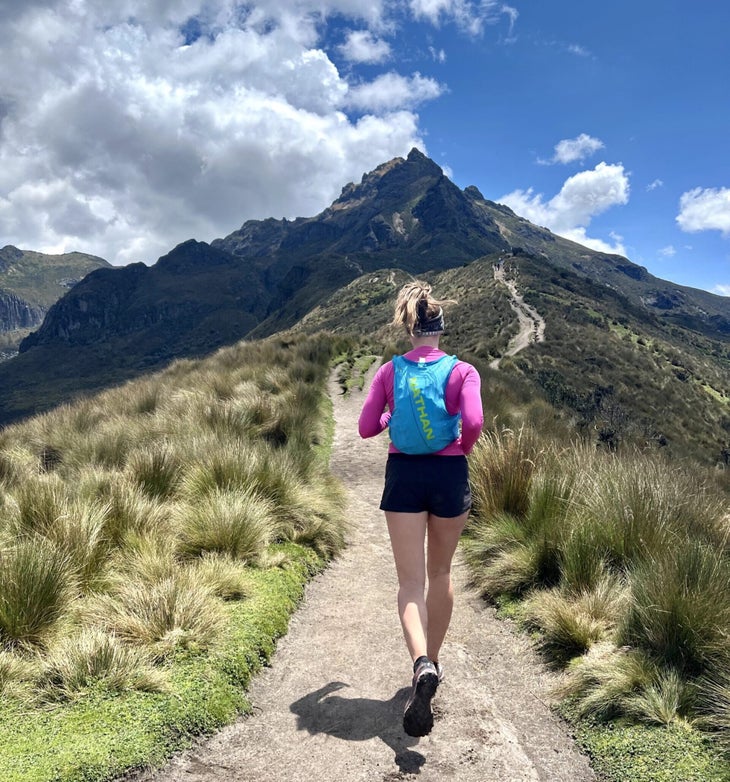
Another up-and-coming trail running destination, Quito—a UNESCO World Heritage Site—hosted its first UTMB qualifying event in the summer of 2025. With trails that traverse both the jungle and the Andes Mountains, runners are never short on variety.
When to Go: April to November
Trails to Try: Just a short drive from Quito’s historic center, Rucu Pichincha (rucu meaning “old man” in Kichwa) is the perfect day trip for trail runners and an accessible opportunity to summit one of Ecuador’s iconic volcanoes without technical mountaineering skills. Alternatively, get your volcano fix by running into the inhabited caldera of Pululahua, one of only two inhabited calderas in the world.
A popular multi-day trek, just shy of 22 miles, the Quilotoa Loop is another excellent option for trail runners exploring the region. The highlight of the route is the stunning aquamarine waters of Quilotoa Crater Lake. For a curated trip, Vagabond Trails and Trail Run Adventures arrange trail running tours in Ecuador.
Jennifer Malloy is a freelance writer and passionate trail runner. Her recent work highlights the best trails and adventure towns near her home in Calgary, Alberta. This summer, she’s aiming to rack up as many miles as possible exploring the Canadian Rockies.
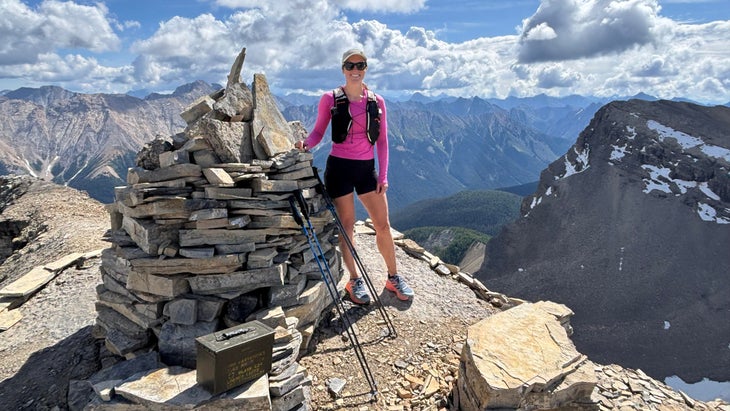
Jennifer Malloy is a travel and outdoor adventure writer based in Calgary, Alberta, with a focus on storytelling that celebrates solo female travel, sustainable exploration, and the joys of adventuring with family. Her work has taken her around the world, from hiking through the Himalayas of Nepal to exploring the volcanic trails of Iceland, yet some of her favorite adventures still take place close to home, in the Canadian Rockies, where she often hikes with her young son. She has contributed to National Geographic, The Globe and Mail, Travel + Leisure, and other leading publications.


